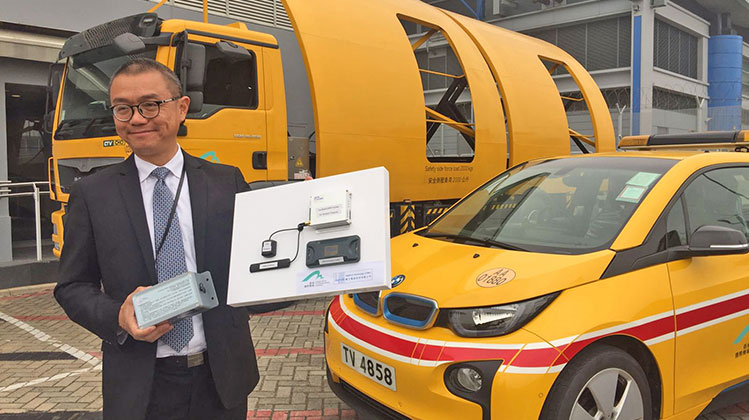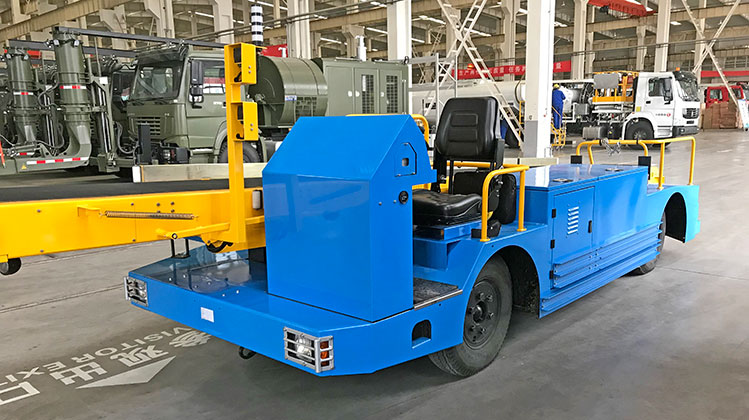An interview with Steven Yiu, Acting Deputy Director, Service Delivery, Airport Authority Hong Kong. By Ross Falconer

Airport-wide vehicle and equipment location tracking has been in place since 2015. “The trackers allow users and companies to track the real-time location and status of their vehicles, allowing more efficient deployment of resources,” explains Steven Yiu, Acting Deputy Director, Service Delivery, Airport Authority Hong Kong. “Tracking for non-motorised GSE is expected to be rolled out in 2019.”
Hong Kong International Airport (HKIA) has been seeing continuous traffic growth. In 2017, passenger throughput, cargo throughput, and flight movements, all reached new annual heights. During the year, HKIA handled 72.9 million passengers and 420,630 flight movements, while cargo and airmail throughput exceeded five million tonnes for the first time.
These impressive figures meant that, for the eighth consecutive year, HKIA ranked as the world’s busiest cargo airport, and is the world’s third-busiest international passenger airport since 2013. Growth has continued in 2018. Over the first four months of the year, HKIA handled 24.7 million passengers (+3.4%) and 1.6 million tonnes of cargo and airmail (+4.2%).
“HKIA now handles over 1,100 flights every day,” says Steven Yiu, Acting Deputy Director, Service Delivery, Airport Authority Hong Kong. “In the face of the saturation of the existing two-runway system, HKIA seeks various ways to enhance operations and efficiency before commencement of the ‘Three-runway System’ in 2024, delivering operational excellence and efficiency for better passenger experience, thus initiating the airfield transformation.”
Several key projects are underway as part of the overall airfield transformation:
• Airport-wide vehicle and equipment location tracking: Since 2015, a GPS system utilising RFID technology has been installed on all motorised vehicles and ground service equipment (GSE), enabling more effective management of vehicles. “The trackers allow users and companies to track the real-time location and status of their vehicles, allowing more efficient deployment of resources,” Yiu explains. “Tracking for non-motorised GSE is expected to be rolled out in 2019.”
• Ramp handling services will be transformed on renewal of licences in July 2018. “For example, the GSE pooling scheme will improve ramp operation efficiency by providing essential GSEs at parking stands for lease to ramp handling operators (RHO). Centralised arrival and transfer baggage unloading services, scheduled to commence in July, will enhance service efficiency at the near-saturated baggage handling facility. Also, a performance-based licence fee mechanism will be introduced, reducing fees for operators that have achieved above-target performances to encourage better services.”
• Virtual reality training facilities are being developed to provide all-weather, round-the-clock training facilities for various ramp operations. Air bridge operation training will commence later this year, with other training to follow.
• An automated foreign object debris (FOD) detection system is in place and commenced full operation in April to provide uninterrupted scanning of FOD on HKIA’s runways.
• On-time performance: Airport Collaborative Decision Making is implemented at HKIA, enabling airport stakeholders to work together and share updated and accurate operational data, including statistics on ramp operation and aircraft movements, optimising work processes and coordination of resources to boost operational efficiency.
Airport Authority Hong Kong is actively involving community stakeholders to collaborate on a technology trial to devise location trackers for non-motorised GSE. “The proof-of-concept trial will focus on the deployment of new technology, including NB-IoT, LoRA and Bluetooth technology for airport-wide non-motorised GSE tracking,” says Yiu. “Collaboration with major stakeholders, including RHO and Cargo Terminal Operators, for the installation of trial units on pallet dollies will be kick-started by mid-2018. Equipment location data will be collected for further evaluation of system performance and potential large-scale implementation.”
Meanwhile, an operational modelling tool has been developed to forecast and simulate the daily operational flow and peaks of the baggage handling system. This enables the baggage handling team to better predict the peak load and usage of different components, such as the early bag store, baggage sorters, and arrival reclaim carousels, throughout the day. “The benefit is more dynamic resource allocation through advance planning, resulting in improved efficiency,” Yiu comments.
A truly seamless end-to-end experience
A similarly progressive approach is being applied to the passenger journey from kerb to gate, through application of the latest technologies to streamline airport processes. For example, the self-bag drop service introduced in 2016 reduces the processing time from 2-3 minutes at traditional check-in counters to just 60 seconds. 120 self-bag drop counters have been installed at the airport.
“120 movable check-in kiosks, namely the iCUSS, will be progressively introduced,” Yiu adds. “The cloud-based mobile kiosks could be rapidly-deployed and relocated for travellers to check themselves in, or by airport staff to provide full service operations. We are also planning to deploy iCUSS at locations outside the airport, such as hotels, convention and exhibition centres, and theme parks.”
In Q3 or Q4 this year, common bag drop counters are expected to be available for those passengers travelling with airlines that have joined the common bag drop scheme, while e-security gates will also be rolled-out for a quicker security process.
“In the near future, biometric technology will be used to provide passengers with a truly seamless experience from check-in to boarding at HKIA,” says Yiu. “After validating identity, the passengers’ face will become the single token to pass through multiple checkpoints from security to immigration, and to boarding. Biometric-enabled auto gates will be installed. The complete end-to-end service is expected to roll out in phases from the second half of 2018 until 2020.”

Ramp handling services will be transformed on renewal of licences in July 2018. “For example, the GSE pooling scheme will improve ramp operation efficiency by providing essential GSEs at parking stands for lease to ramp handling operators,” says Steven Yiu, Acting Deputy Director, Service Delivery, Airport Authority Hong Kong.
The ‘HKG My Flight’ mobile app is central to the digital offer, providing end-to-end airport information and services for travellers, including real-time flight status updates, as well as transport, shopping and dining information. Utilising the iBeacon, the app can alert passengers about their current location in the airport, and time needed to get to their boarding gate by the fastest route. The app also provides augmented reality wayfinding and signage translation, with over 10 languages to be supported in the near future.
Meanwhile, HKIA has launched the smart luggage tag, ‘MyTAG’. “When ‘MyTAG’ is paired with ‘HKG My Flight’, passengers will receive notifications when their checked bags are about to arrive at the baggage reclaim carousel,” Yiu explains. “Passengers could freshen up, shop in duty free, or sit back and relax before their baggage is ready for collection, without having to crowd at the carousel or anxiously watch for their baggage to come out.”
HKIA also strives to be one of the greenest airports in the world, and is accredited at Level 3 Optimisation of ACI’s Airport Carbon Accreditation. The airport reduced carbon emissions by 25.6% by 2015, compared with 2008 levels, which surpassed the original reduction target of 25% set in 2010. “HKIA and its business partners further pledge to reduce airport-wide carbon intensity by 10% by 2020, as compared to 2015 levels,” says Yiu. “HKIA was recently presented with the Platinum award in the ACI Asia-Pacific Green Airports Recognition 2018 for its outstanding achievements in environmental projects.”







